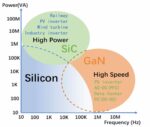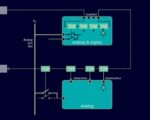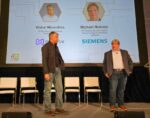High-speed signals enable electronic systems by using memory interfaces, SerDes channels, data center backplanes and connectivity in automobiles. Challenges arise from signal distortions like inter-symbol interference, channel loss and dispersion effects. Multi-gigabit data transfer rates in High-Bandwidth Memory… Read More
Author: Daniel Payne
Signal Integrity Verification Using SPICE and IBIS-AMI
What’s New with Integrated Product Lifecycle Management (IPLM)
I’ve blogged about Methodics before they were acquired by Perforce back in 2020, so I wanted to get an update on Perforce IPLM (Integrated Product Lifecycle Management) by attending their recent webinar. Hassan Ali Shah, Senior Product Manager and Rien Gahlsdor, Perforce IPLM Product Owner were the two webinar presenters. Their… Read More
Transforming Functional Verification through Intelligence
SoC projects are running behind schedule as design and verification complexity has increased dramatically, so just adding more engineers, more tests and more compute aren’t the answer. The time is ripe to consider smarter ways to improve verification efficiency. The added complexity of multiple embedded processors, multiple… Read More
Boosting SoC Design Productivity with IP-XACT
IP-XACT, defined by IEEE 1685, is a standard that pulls together IP packaging, integration, and reuse. For anyone building modern SoCs (Systems on Chip), IP-XACT isn’t just another XML schema: it is a productivity multiplier and a risk-reduction tool that brings order to your electronic system design.
What is IP-XACT?
IP-XACT… Read More
TCAD Update from Synopsys
We live in an exploding AI world, and this has put pressure on foundries to deliver new products faster than ever before. Any help to accelerate the semiconductor R&D goes a long way to make the life of Fab engineers easier. EDA tools in the TCAD (Technology Computer Aided Design) category are critical for TCAD engineers to accelerating… Read More
Assertion IP (AIP) for Improved Design Verification
Over the years design reuse methodology created a market for Semiconductor IP (SIP), now with formal techniques there’s a need for Assertion IP (AIP). Where each AIP is a reusable and configurable verification component used in hardware design to detect protocol and functional violations in a Design Under Test (DUT). LUBIS … Read More
GaN Device Design and Optimization with TCAD
I’ve read articles about power electronics, RF systems and high-frequency applications using SiC and GaN transistors, especially in EVs and chargers, but hadn’t looked into the details of GaN devices. A recent Silvaco webinar proved to be just the format that I needed to learn more about GaN design and optimization. Udita Mittal,… Read More
Simulating Gate-All-Around (GAA) Devices at the Atomic Level
Transistor fabrication has spanned the gamut from planar devices o FinFET to Gate-All-Around (GAA) as silicon dimensions have decreased in the quest for higher density, faster speeds and lower power. Process development engineers use powerful simulation tools to predict and even optimize transistor performance for GAA devices.… Read More
Something New in Analog Test Automation
Digital design engineers have used DFT automation technologies like scan and ATPG for decades now, however, analog blocks embedded within SoCs have historically required that a test engineer write tests that require specialized expertise and that can take man-months to debug. Siemens has a long history in the DFT field, SPICE… Read More
Perforce and Siemens at #62DAC
Wednesday was the last day at #62DAC for me and I attended an Exhibitor Session entitled, Engineering the Semiconductor Digital Thread, which featured Vishal Moondhra, VP Solutions Engineering of Perforce IPLM and Michael Munsey, VP Semiconductor Industry at Siemens Digital Industries. Instead of just talking from slides,… Read More





















Quantum Computing Technologies and Challenges